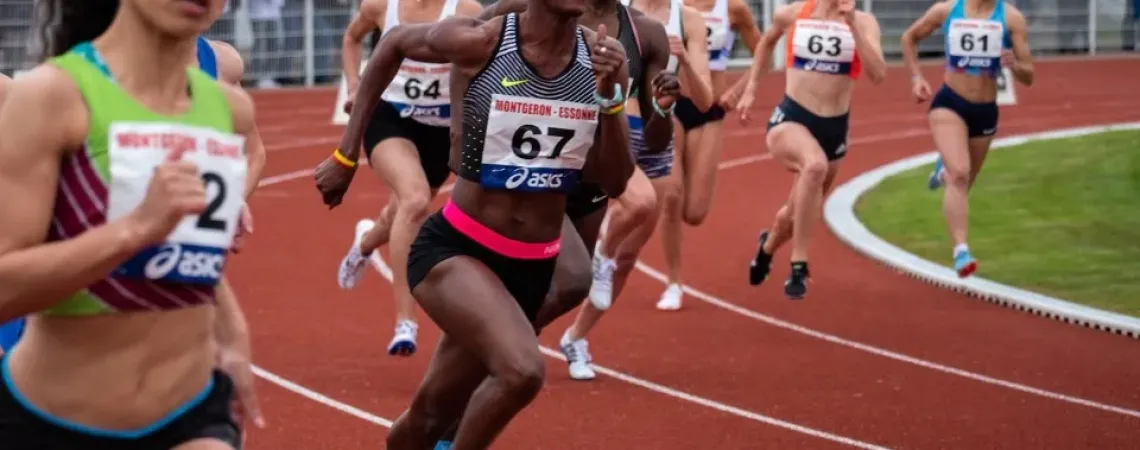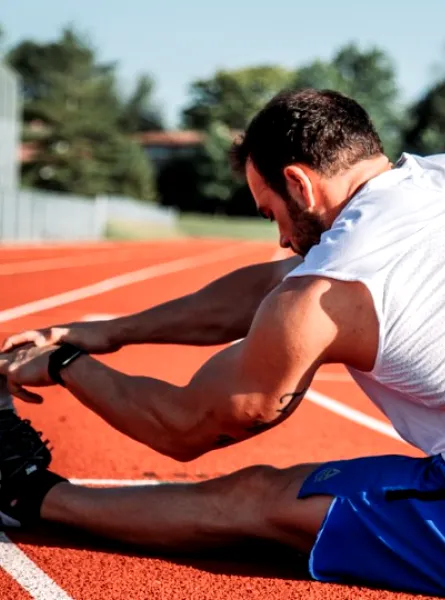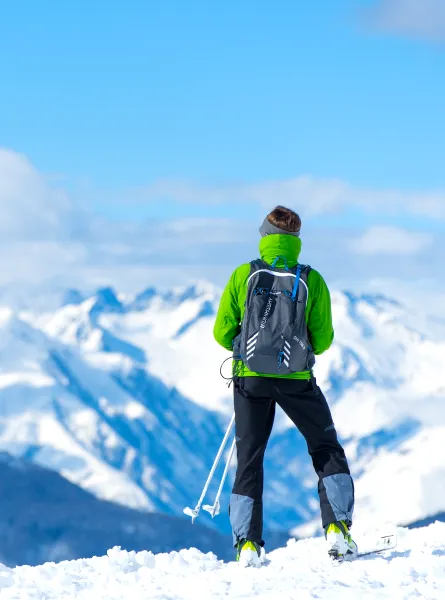
In sports nutrition, the first line of intervention of nutritionists with athletes is to ensure adequate nutritional intake according to needs and performance objectives.
Nutritionists are also called upon to intervene in the case of specific diets such as vegetarianism, in the case of specific medical conditions or in the case of supplementation strategies. These are the topics we will discuss today in this article.
Can we perform well on a vegetarian diet?
This is a very popular question within the sports community, and has become increasingly popular since the release of the documentary: "The Game Changer". However, before we go any further, what is vegetarianism?
As the figure shows, vegetarianism encompasses several dietary practices ranging from strict veganism to lacto-ovo vegetarianism (1). One is the total absence of foods of animal origin while the other includes dairy products, eggs and derivatives of animal products. In recent years, attitudes regarding the impact of meat consumption on performance have changed (1,2).
5 food myths about vegetarianism :
- Eating vegetarian is depriving yourself of protein. FALSE, there are many protein options (dairy products, eggs, pulses, tofu, tempeh, edamame, TVP, seitan...), it's all about knowing how to prepare them!
- There is an impact on testosterone if you do not eat meat. FALSE, it’s a societal thinking behind the sexualization of food, no study shows that there is less testosterone in vegetarian men.
- Essential amino acids (EAA) are not present in plant-based proteins. FALSE, the variety of protein sources throughout the day is enough to provide adequate daily intakes of EAAs.
- Plant-based proteins are superior to animal proteins. FALSE Plant proteins contain the same EAAs. However, their quantity is generally lower. Varying the sources of proteins allows you to reach enough variety.
- You can't perform in sports without eating meat. FALSE Think of: David Haye, James Wilks, Mac Danzig, Jake Shields. It all depends on the person.
Vegetarian athletes have similar energy and macronutrient needs as other athletes (1,2,3,4). However, they also have lifestyle challenges:
- Early satiation (1,5)
- Digestive symptoms
- Intake of certain minerals such as iron, zinc, iodine (1,5,6,8)
- Intake of certain vitamins such as B12, B2 and vitamin D (5,7,9)
To learn more about nutritional strategies and recommendations, register here for Module 4
Runner's Anemia and Relative Energy Deficit Syndrome (RED-S)
These medical conditions are common in the athlete population and are often the result of overtraining. Indeed, in the desire to perform more and more, many athletes are led to overdo it and limit (or even eliminate) the recovery periods essential to the proper functioning of the body and muscle repair.
1. Runner's anemia:
Also known as runner's hemolysis, this is due to the lysis of red blood cells in the small capillaries of the soles of the feet as a result of repetitive strides (10,11). However, other factors such as excessive sweating, small digestive bleeding, or lack of rest days can lead to anemia. Therefore, all athletes should remain vigilant regarding their iron status (10,11).
General symptoms (10,11): lassitude, fatigue, irritability and nervousness. They are often accompanied by other more specific symptoms such as
- reduced physical capacity for exercise
- difficulty in training
- decreased performance
- shortness of breath
- accelerated heart rate during exercise
- dizziness
- cold hands and feet
- pale skin
Why are endurance athletes at greater risk? What are the nutritional needs and recommendations for athletes in this situation? What are the dietary sources of iron?
All the answers can be found in Module 5.
2. Relative Energy Deficit Syndrome (RED-S):
Originally referred to as the female athlete's triad. This model was first presented in 1997 and updated in 2007 (12). It represents the scientific basis and clinical sequelae associated with 3 symptoms:
- Energy deficit
- Bone problems
- Menstrual dysfunction
Research has presented a model based on scientific evidence that includes clear mechanical descriptions and explains how each component of the triad interacts with each other (12,13,14).
Finally, it was realized that male athletes may also be at risk, prompting a new definition (15,16). As a result, the IOC Expert Working Group introduced a broader and more comprehensive term for the condition of "Female Athlete Triad." The term "Relative Energy Deficit in Sport" (RED-S) emphasizes the complexity of the situation and the fact that male athletes are also affected (16). It should be noted that this condition affects between 22 and 58% of athletes (15).
What are the causes leading to the development of this condition? What are the symptoms in male and female athletes? What are the consequences on the endocrine system, bone health, performance and long-term health consequences? What are the nutritional recommendations?
The answers to your questions can be found in Module 5
Supplementation and performance, what about it?
The first thing to remember is that no supplementation can replace a nutritional plan and a training plan adapted to the specific needs of the athlete. A global dietary approach is always to be preferred before considering supplementation (17).
However, supplementation should be considered when it is difficult for an athlete to meet nutritional recommendations for certain nutrients (such as iron or vitamin D) which, when deficient, can have serious consequences on health and performance (18;19).
However, the difference in regulations from one country to another and the presence of thousands of different products make it difficult to make precise recommendations regarding the use of supplements and their benefits. Nevertheless, 87% of athletes report taking supplements, of which 20% got their recommendation from friends or family members, 14% from their coach, 11% from teammates and only 0.8% from their nutritionist (20).
How to choose a supplement? What are the essential criteria? Which supplements can optimize muscle mass gain? Fat loss? Muscle health? Testosterone production?
The answers to your questions can be found in module 6
Références :
- Larson-Meyer DE. Vegetarian Sports Nutrition. Food Choices and Eating PLans for fitness and performance. Champaign, IL : Human Kinetics; 2006.
- Goran MI. Variation in total energy expenditure in humans. Obes Res. 1995;3(S1):59-66.
- Thomas DT, Erdman KA, Burke L.M. Position of the Academy of Nutrition and Dietetics, Dietician of Canada, and the American College of Sports Medicine : Nutrition and athletes performance. J Acad Nutr Diet. 2016;116(3):501-528.
- Mellina V, Craig W, Levin S. Position of the Academy of Nutrition and Dietetics : vegetarian diets. J Acad Nutr Diet. 2016;116(12):1970-1980.
- Larson-Meyer DE. Vitamin D supplementation in Athletes. Nestle Nutr Inst Workshop Ser. 2013; 75:109-121.
- Craig WJ. Iron Status of vegetarian. Am J Clin Nutr. 1994;59(suppl 5):1233S-1237S.
- Platel K, Srinivasan K. Bioavailability of micronutrients from plant foods : an update. Crit Rev Food Sci Nutr. 2016:56(10):1608-1619.
- Krajcovicova-Kudlackova M, Buckova K, Klimes I, Sebokova E. Iodine deficiency in vegetarians and vegans. Ann Nutr Metab. 2003;47(5):183-185.
- Herrmann W, Geisel J. Vegetarian lifestyle and monitoring of Vitamin B-12 status. Clin Chim Acta. 2002; 326(1-2):47-59.
- Abid A Fazal, Mary S Whittemore, and Katharine C DeGeorge . Foot-strike haemolysis in an ultramarathon runner. BMJ Case Rep. 2017; Dec 13. Bcr2017220661.
- Yu-Hui Chiu, Jiun-I Lai , Shih-Hao Wang , Chorng-Kuang How , Li-Hua Li , Wei-Fong Kao, Chen-Chang Yang, Ray-Jade Chen. Early changes of the anemia phenomenon in male 100-km ultramarathoners. J Chin Med Assoc. 2015 Feb;78(2):108-13.
- Mary Jane De Souza, Kristen J. Koltun, Nancy I Williams. The Role of Energy Availability in Reproductive Function in the Female Athlete Triad and Extension of its Effects to Men: An Initial Working Model of a Similar Syndrome in Male Athletes. Sports Medicine (2019) 49 (Suppl 2):S125–S137.
- Meredith B Loveless. Female athlete triad. Curr Opin Obstet Gynecol 2017 Oct;29(5):301-305.
- Sayaka Nose-Ogura, Miyuki Harada, Osamu Hiraike, Yutaka Osuga, Tomoyuki Fujii. Management of the female athlete triad. J Obstet Gynaecol Res 2018 Jun;44(6):1007-1014.
- Danielle M. Logue, Sharon M. Madigan, Anna Melin, Eamonn Delahunt , Mirjam Heinen, Sarah-Jane Mc, Donnell and Clare A. Corish. Low Energy Availability in Athletes 2020: An Updated Narrative Review of Prevalence, Risk, Within-Day Energy Balance, Knowledge, and Impact on Sports Performance. Nutrients 2020 Mar 20;12(3):835.
- Siobhan M Statuta, Irfan M Asif, Jonathan A Drezner Relative energy deficiency in sport (RED-S).Br J Sports Med 2017 Nov;51(21):1570-1571.
- Burke LM, Cato L. Supplements and sports foods. In: Burke LM, Deakin V, ed. Clinical Sports Nutrition. 5th ed. Sydney, Australia : McGraw-Hill Australia; 2015:493-591.
- Deakin V, Peeling P. Prevention, detection and treatment of iron depletion and deficiency in athletes. In : Burke LM, Deakin V, ed. Clinical Sports Nutrition. 5th ed. Sydney, Australia : McGraw-Hill Australia, 2015:266-302.
- Willis KS, Peterson NJ, Larson-Meyer DE. Should we be concerned about the vitamin D status of athletes? Int J Sport Nutr Exerc Metab. 2008;18(2):204-224.
- Centre Canadian pour l’éthique dans le sport. (consulté le 05/2021). Question Suppléments Infographie. https://cces.ca/fr/question-supplements-infographique.





